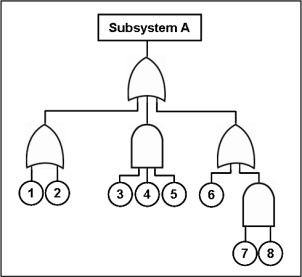For each system targets considered in the "fire risk characterization" step of the new PBFPD process, fire protection engineers (FPEs) have to quantify how these targets are affected by direct and indirect effects of fire events. Fire events differ from the current notion of fire scenarios: a fire event does not only consider the time frame between the iginition and the extinguishment of a fire but it also involves the recovery period follwing a fire until the considered system has reach a new "chronic" state, where it can perform again in a daily basis.
Fire risk analysis has then to be conducted in order to characterize the likelihood and the consequences of fire events on the targets. The FPE work is then to propose fire protection measures in order to minimize the occurrence of the damaging fires and mitigate the impact of these fire events on the system performance (i.e. the consequences of the fires events affecting system targets).
In a deterministic approach, the current PBFPD processes do not specify detailed procedures on how to select fire design scenarios or they provide a list from where the FPE and the stakeholders can “pick up” and finally agree on the ones to use. Thus, the resulting fire design scenarios fell to consider the chronic use of a building, are focused on the fire event instead of being target oriented and miss the importance of the recovery phase.
In this step of the proposed PBFPD process, event trees are elaborated in order to describe quantitatively the different fire events. Fault trees are also established in order to characterize all the different scenarios leading to target damage, so to capture the indirect threats to the targets. Fire risk models are used in this process step to help calculate the scenario likelihoods.
Tools related to the quantification of the likelihood of fire events may include fault trees, event trees, bayesian networks and "ready-to-use" tools such as FiRECAMTM [1], CRISP [2] and FIERAsystem [3].



Databases related to the quantification of the likelihood of fire events may include fire statistics with an emphasis on fire ignition frequencies and data on fire protection measure reliability.
'Test bed' environments will be set up for assessing the appropriateness of tools to quantify the likelihood of fire events for specific "building-occupant" systems, along with the corresponding data needed to use the tools.
[1] http://www.firemodelsurvey.com/pdf/FiRECAM_2001.pdf
[2] http://www.firemodelsurvey.com/pdf/CRISP_2001.pdf
[3] http://www.firemodelsurvey.com/pdf/FIERAsystem_2001.pdf
Alberto Alvarez - WPI (2012-10-04)